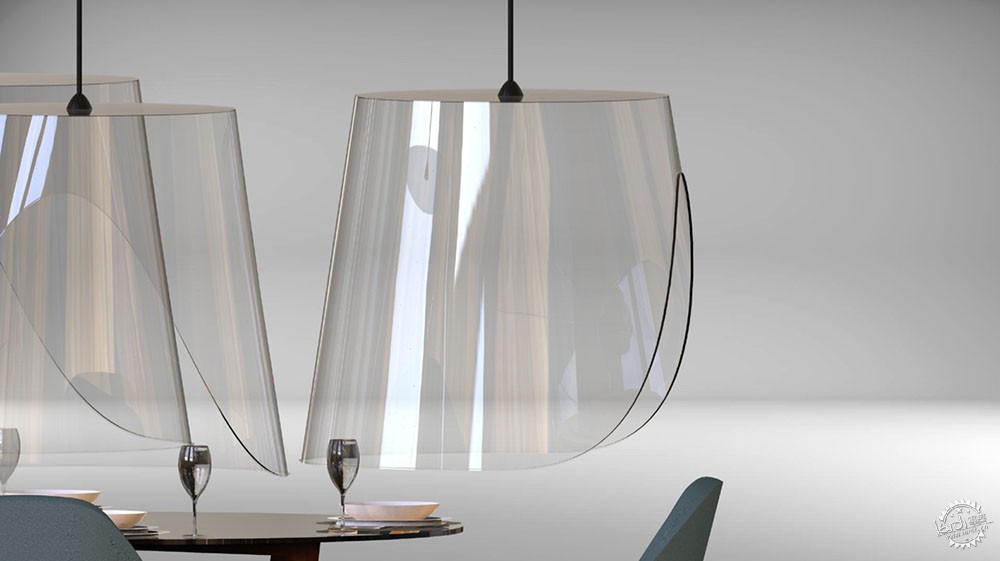
Courtesy of Christophe Gernigon Studio
有机玻璃可用于阻止病毒传播
What Is Plexiglass? The Protective Plastic Many Are Using to Combat Viral Spread
由专筑网小R编译
化学家及发明家Otto Rohm在1901年首次提出有机玻璃的概念,但是到了1933年,Rohm & Haas公司则以“Plexiglas”的商标名称将其引入市场,这种材料是玻璃的轻质且抗破碎的替代品,其历史源远流长,并且有着多种功能。如今,有机玻璃继续应用在更多新领域之中,它也是一种潜在的策略,能够阻止病毒的传播,餐厅、商店等企业已经开始应用这种材料,作为员工和顾客的保护材质。接下来,我们会深入讨论研究这种特殊的材料,了解它的特征、发展历史,以及如今的使用方式。
Although chemist and inventor Otto Rohm had first come up with the idea for plexiglass in 1901, it wasn’t until 1933 that the Rohm & Haas company first introduced it to the market under the trademark name Plexiglas. The material, which is considered a lightweight and shatter-resistant alternative to glass, has had a fascinating history and experienced a multitude of different uses in that time. Today, plexiglass continues to be utilized in new and interesting ways, including as a potential means with which to help combat coronavirus spread. Restaurants, stores, and other businesses have begun using plexiglass partitions as protective shields for both workers and customers, especially as cities and towns slowly reopen. Below, we dive into this unusual material, addressing its material properties, its history, and the ways it continues to be used today.
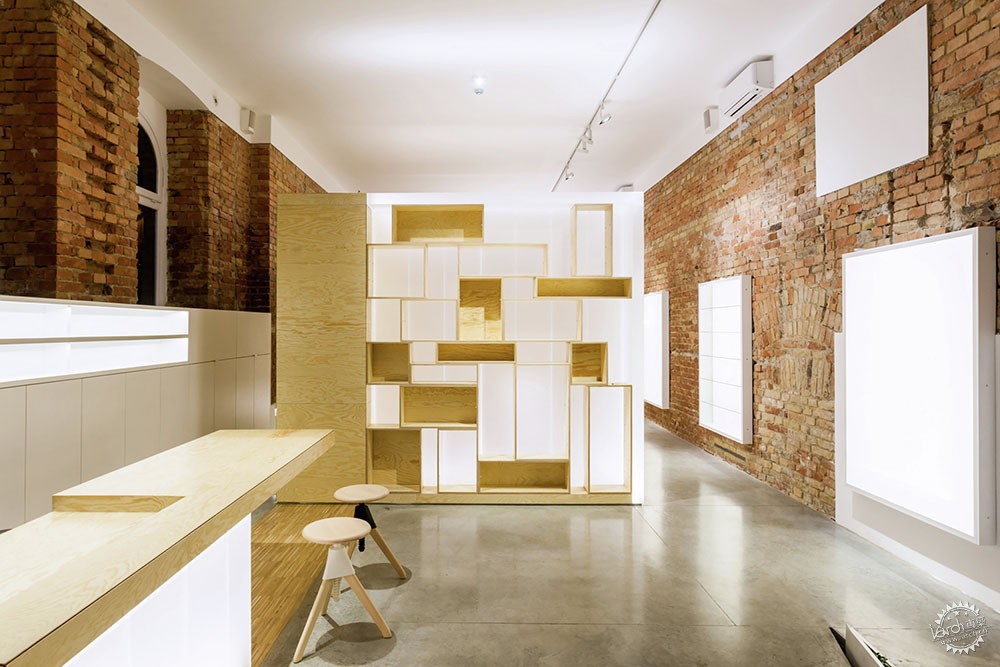
Image © Balazs Danyi
有机玻璃也被称为丙烯酸、丙烯酸玻璃,更准确地说,应该是甲基丙烯酸甲酯(PMMA),这是一种透明的石油基热塑性塑料,通过片材制作而成,这也是一种坚固的轻质材料,比玻璃有着更好的耐冲击强度,因此它能够适用于户外,相较于其他大多数塑料制品,这种材料有着更好的环境稳定性,除此之外,其使用寿命也很长,有着高度的光传输效益、简单的制作生产过程。但是,有机玻璃产品很少使用纯粹的PMMA,而是调整材料来进一步优化性能。其中的调整步骤包括添加丙烯酸丁酯而提升其冲击强度,亦或是添加甲基丙烯酸增强其耐高温性能,以及添加染料让其拥有丰富的色彩,诸如此类。
Also known as acrylic, acrylic glass, or more scientifically, poly(methyl methacrylate) (PMMA), plexiglass is a transparent petroleum-based thermoplastic typically manufactured in sheets. It is a strong, tough, and lightweight material, with a higher impact strength than glass. It is also useful for outdoor applications due to a higher environmental stability than most other plastics, such as polystyrene and polyethylene. These advantages, combined with other properties including high service life, effective light transmission, and simple processing, make plexiglass a highly useful invention. However, plexiglass products rarely use pure PMMA, instead modifying the material to optimize its properties even further. Such modifications include adding butyl acrylate to improve impact strength, adding methacrylic acid to allow for higher temperature uses, adding dyes to give color for decorative applications, and many more.
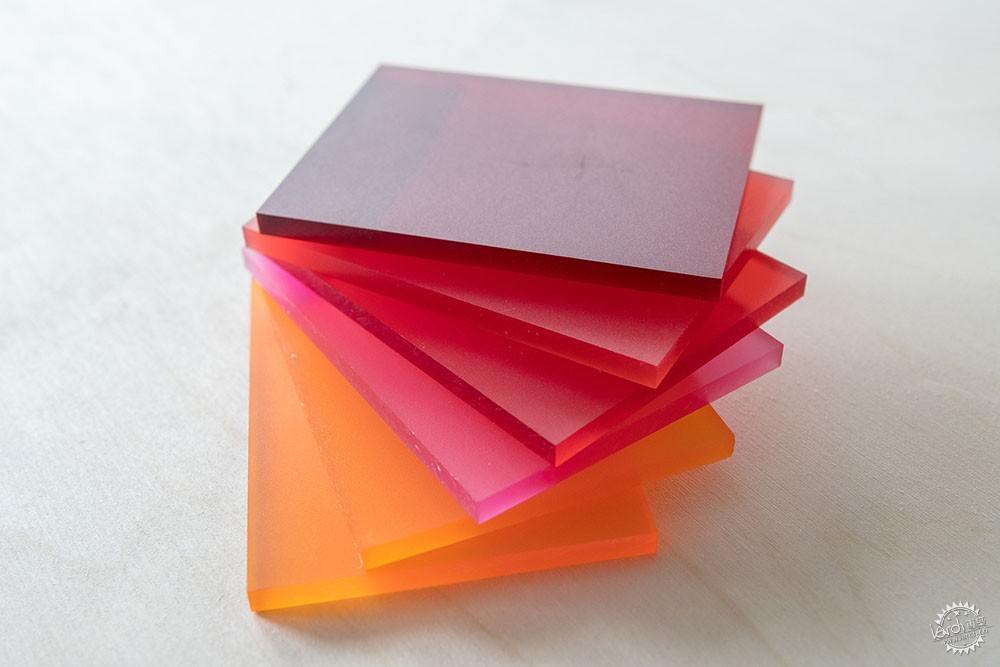
© dpentinen / Shutterstock
在上世纪早期,有机玻璃发明之后,这种材料很快应用在不同的领域,其中包括仪器的外壳、手表、眼镜,以及餐具等等,制造商有Rohm & Haas公司,也有英国的化学帝国工业公司,其商标名称为“Perspex”,另外还有美国的杜邦公司,商标名称为“Lucite”。在二战期间,有机玻璃材料应用在飞机驾驶舱里,而整体的有机玻璃工业得以迅速发展。举例来说,在这段时间里,Rohm & Haas公司的员工数量增加了10倍,在战后时期,有机玻璃则更多地应用在建筑领域,其中包括照明广告、玻璃屋面、立面设计等等。到了上世纪60和70年代,有机玻璃也开始涉及卫生设施和温室窗户领域。
而到了今天,有机玻璃的应用范围愈发广发,它是透明玻璃的替代品,因此常常应用在水族馆、潜艇观察镜、汽车镜头、运动场保护层、飞机窗户、防爆警车、灯塔镜头等等产品中,除此之外,它还应用在很多医疗领域,比如外科手术、牙科材料、眼镜等等。
After the invention of plexiglass in the early 1900s, the material was quickly used for a myriad of different applications, including for instrument covers, watch glasses, and cutlery. Manufacturers included not just the Rohm & Haas company but also the U.K.’s Imperial Chemical Industries, which trademarked the name Perspex, and the U.S.’s DuPont Company, which trademarked the name Lucite. During World War II, the plexiglass industry grew dramatically due to the use of the material in aircraft cockpits. The Rohm & Haas Company staff, for example, increased tenfold during this time. Following the war, plexiglass began to be used for more architectural applications, including illuminated advertising, glass roofing, and façade design. By the 1960’s and 70’s, plexiglass was also used in sanitary facilities and greenhouse windows.
Today, plexiglass is used for an extremely wide range of applications. As a transparent glass substitute, it is often used for aquariums, viewing ports in submarines, automobile lenses, spectator protection in sports rinks, aircraft windows, police riot control vehicles, lighthouse lenses, and more. It is also used in a number of medical fields including for some surgeries, dentistry materials, and eyeglasses.
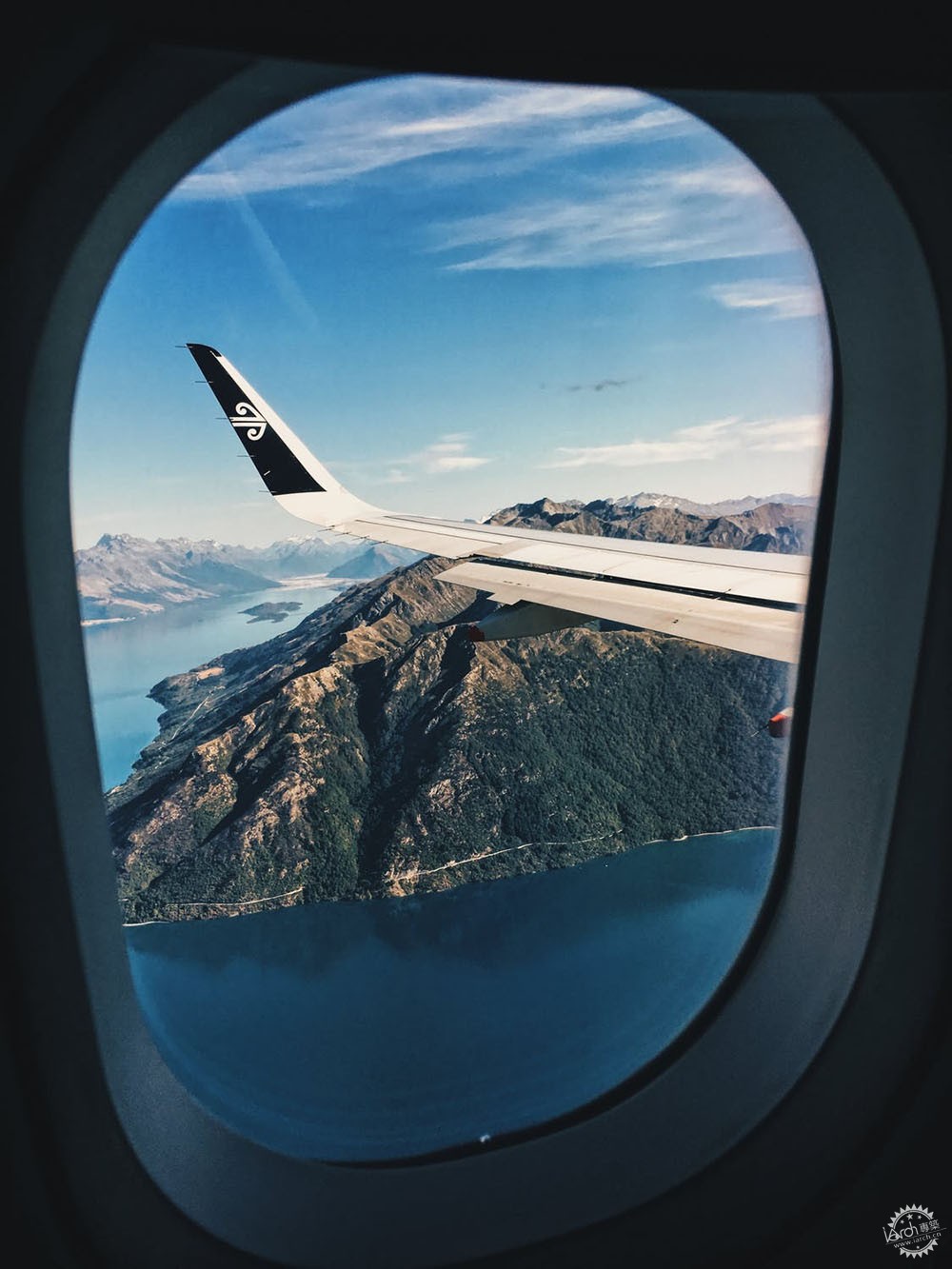
via Pexels, user Janiere Fernandez
在建筑中,有机玻璃可以用作窗户,它有着易维护、高强度、耐候性好的特征,因此常常应用在天窗上,同时,它们也常常应用于浴室里,因为需要防滑且防碎,这样能够有效降低伤害的潜在危机,而这些优势也促使有机玻璃成为了很好利用的家具材料,架子、椅子、桌面皆可。最后,有机玻璃还出现在更为专业的建筑应用之中,比如其透光性、不易破损性、耐候性,并且不容易藏污纳垢,这使其成为了温室和太阳能电池板的理想材料。
Architecturally, plexiglass can be used for windows, and are most often used in skylights due to their easy maintenance, strength, and weather resistance. They are also often used in bathrooms – for example, in shower frames – because they are slip-resistant and shatterproof, mitigating the risk of serious injury. These advantages additionally make plexiglass a useful furniture material, especially for shelves, stools, and tabletops. Finally, plexiglass is used for several more specialized architectural applications as well: its transmission of sunlight, resistance to breakage, weather resistance, and tendency to collect little dirt makes it the ideal material for building both greenhouses and solar panels.

Image ©
Worlderful Photography / Yousub Song FOLLOW
在疫情时期,餐厅、商店、小型企业都需要进行临时的建筑干预,那么有机玻璃也因此而拥有了另一重身份,世界卫生组织建议,食品市场和杂货商店可以应用有机玻璃来作为展示柜的材料,可以展示烘焙食物,而不是直接展示未包装的食物,而杂货店和药店也在收银台安装透明的有机玻璃面板,防止病毒在员工和顾客之间的传播。各个企业逐步复工,有机玻璃的使用频率逐步增加,一些企业甚至计划在办公桌和水槽之间增加分隔板。餐厅、电影院、美甲沙龙也应用了有机玻璃,减少人与人之间的直接接触。
With COVID-19 safety requirements necessitating temporary architectural interventions in restaurants, stores, and small businesses, plexiglass is gaining yet another role. The World Health Organization recommends that food markets and grocery stores use plexiglass display cabinets to serve baked goods and self-serve foods instead of openly displaying unwrapped food products. Grocery stores and pharmacies have also been installing clear plexiglass panels at checkout registers to limit viral spread between customers and workers. As businesses and offices slowly reopen, the use of plexiglass partitions is expected to only increase, with some offices planning to add barriers between desks or even sinks. Plexiglass is also being added in restaurants, movie theaters, and nail salons to limit contact not just between workers and customers but among customers themselves.
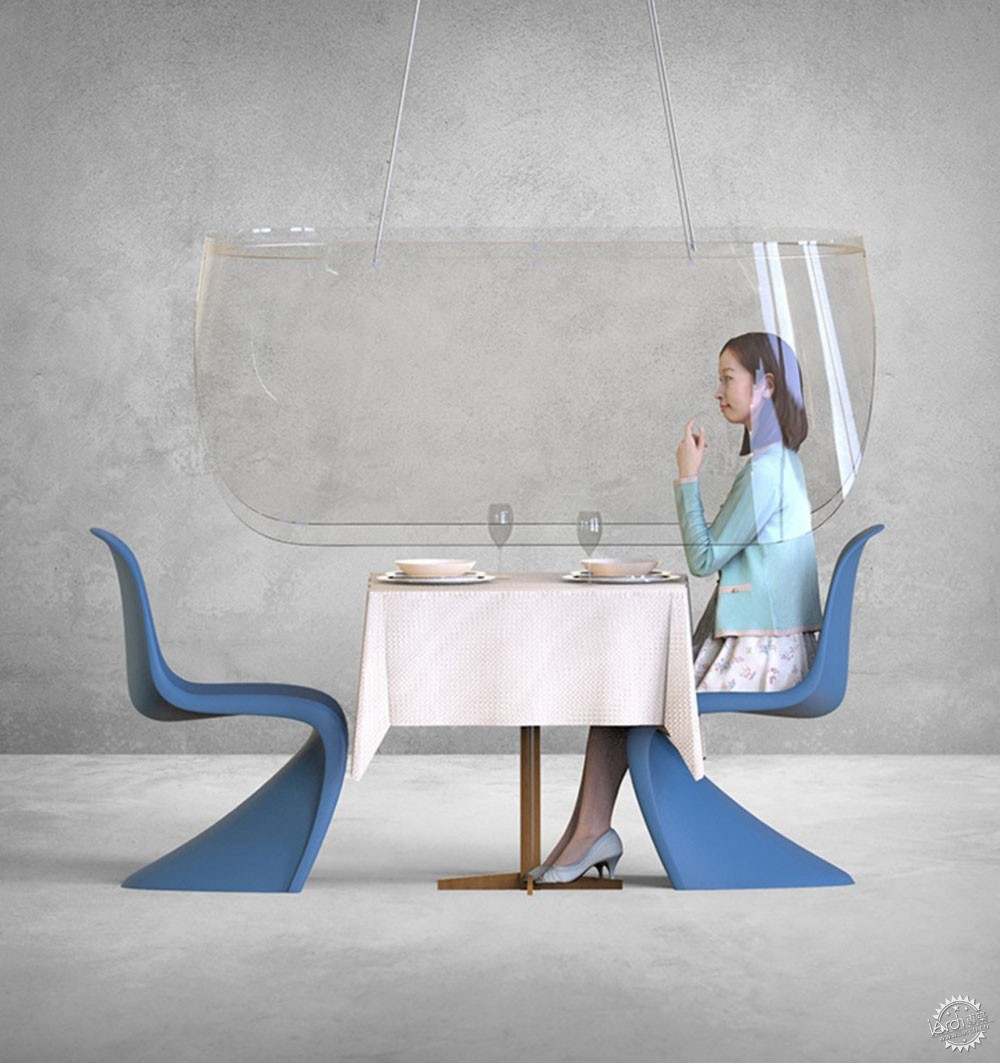
Courtesy of Christophe Gernigon Studio
这些有机玻璃隔墙有着多种形式,有的是简单的分隔面板,可以应用在餐厅的座位之间,而一些设计工作室也构思了既高效又美观的有机玻璃安全措施,举例来说,Christophe Gernigon工作室就设计了一种名为“PLEX’EAT”的圆形有机玻璃保护罩,它可以应用在拥挤的环境和空间之中,起到保护使用者的作用,比如人们在餐厅就餐的时候,PLEX’EAT保护罩就安装在桌子旁边,将顾客彼此分隔开,除此之外,在接待台、会议室座椅、教室座椅,甚至是赌场座椅都可以安装这种装置。
These plexiglass partitions can take many forms – many are simple sheet barriers, for example between booths at restaurants, but some design studios have looked to implement plexiglass safety measures that are both effective and aesthetically pleasing. The Christophe Gernigon Studio, for example, recently designed a round, lamp-like plexiglass protection bubble called PLEX’EAT that can be installed over any kind of seat or table, protecting users even in crowded environments or spaces that necessitate close interaction. An obvious example is restaurant dining, where PLEX’EAT bubbles can be installed to over the entire table or even over each seat, protecting each guest even from each other. Other examples include installing them over receptionist desks, conference room seats, classroom desks, and even casino seating.

Courtesy of Christophe Gernigon Studio
有机玻璃的功能很强大,可以应用在建筑设计等多个领域,一个多世纪以来,有机玻璃的应用不断地在发生变化,从而适应各种各样的新需求,新冠病毒的影响让全球都更加注重各个场合的卫生环境,不仅仅针对政府,也针对各个企业,例如医疗设备公司、口罩制造公司,以及有机玻璃制造公司。如今,有机玻璃的多功能特征再次得以论证,在不久的将来,这种材料必将得以更加迅速的发展。
Plexiglass is an extremely versatile material with properties that lend it to widespread use throughout an array of different industries, including architecture and design. The applications of plexiglass have varied throughout its over-a-century-long history, adapting to new needs and historical changes as they arise. The COVID-19 pandemic has necessitated a global response across not just governments but corporations and industries as well, including medical equipment companies, face mask makers, and in this case, plexiglass manufacturers. Today, the versatility of plexiglass yet again proves useful – and it’s likely that we’ll see a lot more of it in the future.
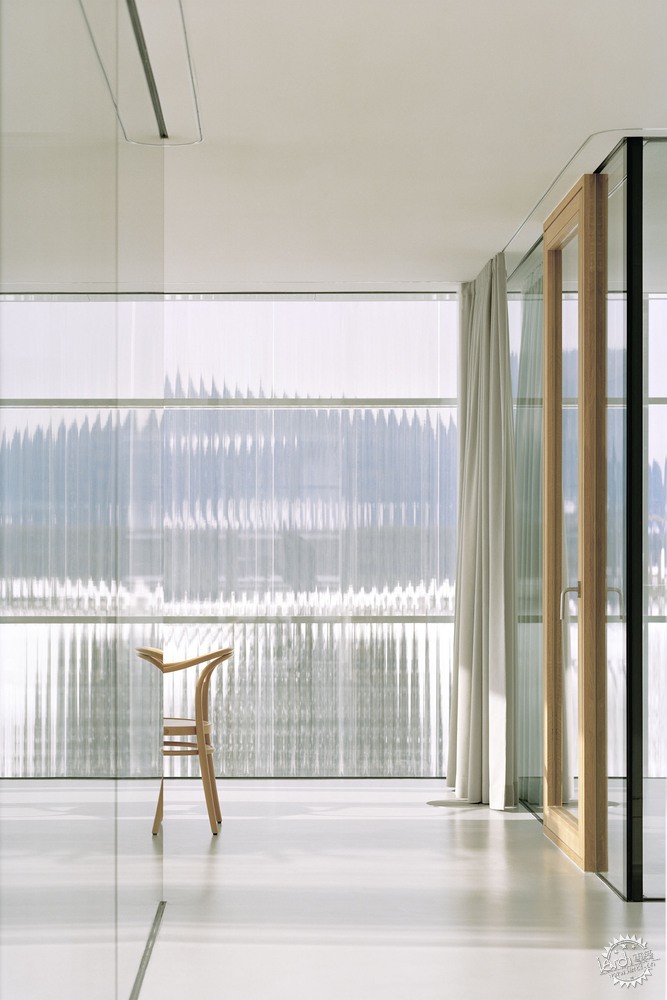
Image © Oliver Jaist

© Colleen Michaels / Shutterstock

Image © Zsuzsa Darab

via Wikipedia, user ohconfucius
|
|
